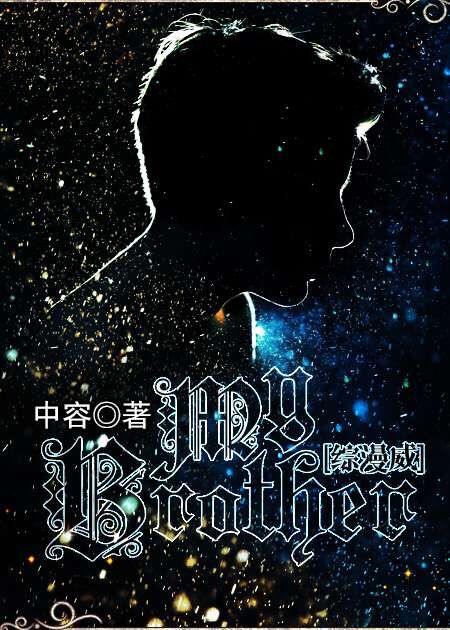the origin of species(物种起源)-第28部分
按键盘上方向键 ← 或 → 可快速上下翻页,按键盘上的 Enter 键可回到本书目录页,按键盘上方向键 ↑ 可回到本页顶部!
————未阅读完?加入书签已便下次继续阅读!
taken advantage of by natural and sexual selection; in order to fit the several species to their several places in the economy of nature; and likewise to fit the two sexes of the same species to each other; or to fit the males and females to different habits of life; or the males to struggle with other males for the possession of the females。
Finally; then; I conclude that the greater variability of specific characters; or those which distinguish species from species; than of generic characters; or those which the species possess in common; that the frequent extreme variability of any part which is developed in a species in an extraordinary manner in comparison with the same part in its congeners; and the not great degree of variability in a part; however extraordinarily it may be developed; if it be common to a whole group of species; that the great variability of secondary sexual characters; and the great amount of difference in these same characters between closely allied species; that secondary sexual and ordinary specific differences are generally displayed in the same parts of the organisation; are all principles closely connected together。 All being mainly due to the species of the same group having descended from a common progenitor; from whom they have inherited much in common; to parts which have recently and largely varied being more likely still to go on varying than parts which have long been inherited and have not varied; to natural selection having more or less completely; according to the lapse of time; overmastered the tendency to reversion and to further variability; to sexual selection being less rigid than ordinary selection; and to variations in the same parts having been accumulated by natural and sexual selection; and thus adapted for secondary sexual; and for ordinary specific purposes。
Distinct species present analogous variations; and a variety of one species often assumes some of the characters of an allied species; or reverts to some of the characters of an early progenitor。
These propositions will be most readily understood by looking to our domestic races。 The most distinct breeds of pigeons; in countries most widely apart; present sub…varieties with reversed feathers on the head and feathers on the feet; characters not possessed by the aboriginal rock…pigeon; these then are analogous variations in two or more distinct races。 The frequent presence of fourteen or even sixteen tail…feathers in the pouter; may be considered as a variation representing the normal structure of another race; the fantail。 I presume that no one will doubt that all such analogous variations are due to the several races of the pigeon having inherited from a common parent the same constitution and tendency to variation; when acted on by similar unknown influences。 In the vegetable kingdom we have a case of analogous variation; in the enlarged stems; or roots as commonly called; of the Swedish turnip and Ruta baga; plants which several botanists rank as varieties produced by cultivation from a common parent: if this be not so; the case will then be one of analogous variation in two so…called distinct species; and to these a third may be added; namely; the common turnip。 According to the ordinary view of each species having been independently created; we should have to attribute this similarity in the enlarged stems of these three plants; not to the vera causa of community of descent; and a consequent tendency to vary in a like manner; but to three separate yet closely related acts of creation。
With pigeons; however; we have another case; namely; the occasional appearance in all the breeds; of slaty…blue birds with two black bars on the wings; a white rump; a bar at the end of the tail; with the outer feathers externally edged near their bases with white。 As all these marks are characteristic of the parent rock…pigeon; I presume that no one will doubt that this is a case of reversion; and not of a new yet analogous variation appearing in the several breeds。 We may I think confidently come to this conclusion; because; as we have seen; these coloured marks are eminently liable to appear in the crossed offspring of two distinct and differently coloured breeds; and in this case there is nothing in the external conditions of life to cause the reappearance of the slaty…blue; with the several marks; beyond the influence of the mere act of crossing on the laws of inheritance。
No doubt it is a very surprising fact that characters should reappear after having been lost for many; perhaps for hundreds of generations。 But when a breed has been crossed only once by some other breed; the offspring occasionally show a tendency to revert in character to the foreign breed for many generations some say; for a dozen or even a score of generations。 After twelve generations; the proportion of blood; to use a common expression; of any one ancestor; is only 1 in 2048; and yet; as we see; it is generally believed that a tendency to reversion is retained by this very small proportion of foreign blood。 In a breed which has not been crossed; but in which both parents have lost some character which their progenitor possessed; the tendency; whether strong or weak; to reproduce the lost character might be; as was formerly remarked; for all that we can see to the contrary; transmitted for almost any number of generations。 When a character which has been lost in a breed; reappears after a great number of generations; the most probable hypothesis is; not that the offspring suddenly takes after an ancestor some hundred generations distant; but that in each successive generation there has been a tendency to reproduce the character in question; which at last; under unknown favourable conditions; gains an ascendancy。 For instance; it is probable that in each generation of the barb…pigeon; which produces most rarely a blue and black…barred bird; there has been a tendency in each generation in the plumage to assume this colour。 This view is hypothetical; but could be supported by some facts; and I can see no more abstract improbability in a tendency to produce any character being inherited for an endless number of generations; than in quite useless or rudimentary organs being; as we all know them to be; thus inherited。 Indeed; we may sometimes observe a mere tendency to produce a rudiment inherited: for instance; in the common snapdragon (Antirrhinum) a rudiment of a fifth stamen so often appears; that this plant must have an inherited tendency to produce it。
As all the species of the same genus are supposed; on my theory; to have descended from a common parent; it might be expected that they would occasionally vary in an analogous manner; so that a variety of one species would resemble in some of its characters another species; this other species being on my view only a well…marked and permanent variety。 But characters thus gained would probably be of an unimportant nature; for the presence of all important characters will be governed by natural selection; in accordance with the diverse habits of the species; and will not be left to the mutual action of the conditions of life and of a similar inherited constitution。 It might further be expected that the species of the same genus would occasionally exhibit reversions to lost ancestral characters。 As; however; we never know the exact character of the common ancestor of a group; we could not distinguish these two cases: if; for instance; we did not know that the rock…pigeon was not feather…footed or turn…crowned; we could not have told; whether these characters in our domestic breeds were reversions or only analogous variations; but we might have inferred that the blueness was a case of reversion; from the number of the markings; which are correlated with the blue tint; and which it does not appear probable would all appear together from simple variation。 More especially we might have inferred this; from the blue colour and marks so often appearing when distinct breeds of diverse colours are crossed。 Hence; though under nature it must generally be left doubtful; what cases are reversions to an anciently existing character; and what are new but analogous variations; yet we ought; on my theory; sometimes to find the varying offspring of a species assuming characters (either from reversion or from analogous variation) which already occur in some members of the same group。 And this undoubtedly is the case in nature。
A considerable part of the difficulty in recognising a variable species in our systematic works; is due to its varieties mocking; as it were; come of the other species of the same genus。 A considerable catalogue; also; could be given of forms intermediate between two other forms; which themselves must be doubtfully ranked as either varieties or species; that the one in varying has assumed some of the characters of the other; so as to produce the intermediate form。 But the best evidence is afforded by parts or organs of an important and uniform nature occasionally varying so as to acquire; in some degree; the character of the same part or organ in an allied species。 I have collected a long list of such cases; but here; as before; I lie under a great disadvantage in not being able to give them。 I can only repeat that such cases certainly do occur; and seem to me very remarkable。
I will; however; give one curious and complex case; not indeed as affecting any important character; but from occurring in several species of the same genus; partly under domestication and partly under nature。 It is a case apparently of reversion。 The ass not rarely has very distinct transverse bars on its legs; like those of a zebra: it has been asserted that these are plainest in the foal; and from inquiries which I have made; I believe this to be true。 It has also been asserted that the stripe on each shoulder is sometimes double。 The shoulder…stripe is certainly very variable in length and outline。 A white ass; but not an albino; has been described without either spinal or shoulder…stripe; and these stripes are sometimes very obscure; or actually quite lost; in dark…coloured asses。 The koulan of Pallas is said to have been seen with a double shoulder…stripe; but traces of it; as stated by Mr Blyth and others; occasionally appear: and
![[网王同人]colorless wind封面](http://www.baxi2.com/cover/noimg.jpg)



